One of the things I tried and failed to do last year was find the place where Nouna Marika and her family lived. Nouna in Greek means godmother. Marika Schtakleff was my grandmother’s sister and godmother to my mother. We all called her Nouna Marika. She was married to Efthymios Gaitanopoulos, another Jerusalemite, and had two daughters, Feely and Jenny—mum’s first cousins. Feely now lives in Canada, Jenny in Cyprus. (I realise that at some point I’ll have to add a family tree to this blog but I think so far you can follow me.)

(Photo from Maroussia Wentzel’s archive)
Their home, a rented flat in a quadruplex in the lower part of Katamon, was not too far from the Kassotis (Mum’s) house but far enough to provide a somewhat safer haven when the “troubles” reached their back yard. The Kassotis house was two doors up from the small, Christian-owned Semiramis Hotel which, in the dead of night of 5 January 1948, was bombed by the Haganah, the Jewish paramilitary organisation that grew up to be the Israeli army. The bombing, in addition to killing 24 people (including members of the Lorenzo family—the owners*—and the Spanish consul), had the desired effect: people got scared and started vacating the area.

Not long after the bombing, as fighting picked up around them, the Kassotis, too, left their house, and went to stay at the flat of the Gaitanopoulos who had already departed for Cairo. A few months later, on 1 May 1948*, the Kassotis made their way to Cyprus. They left in the nick of time: only days later Katamon fell to the Zionist forces.
My mother showed me Marika’s building when we toured Katamon in 1986. She pointed at the storied katifora (downhill road) that led from their own house towards the house of their cousins who were mum and her younger sister, Mary’s closest playmates. And as we walked, she narrated in an untypically unemotional manner the story of how they went to stay at Feely and Jenny’s for a while before leaving for Cyprus. As the events of those months sprung to life before my eyes, the trauma of the war my family experienced and the enormity of the pain at losing their home sank in for the first time in earnest.
In my film roll from that trip I have exactly one picture of (what I think was) Nouna Marika’s house. Too budget-conscious and not forward-looking enough in my mid-twenties, for sure!
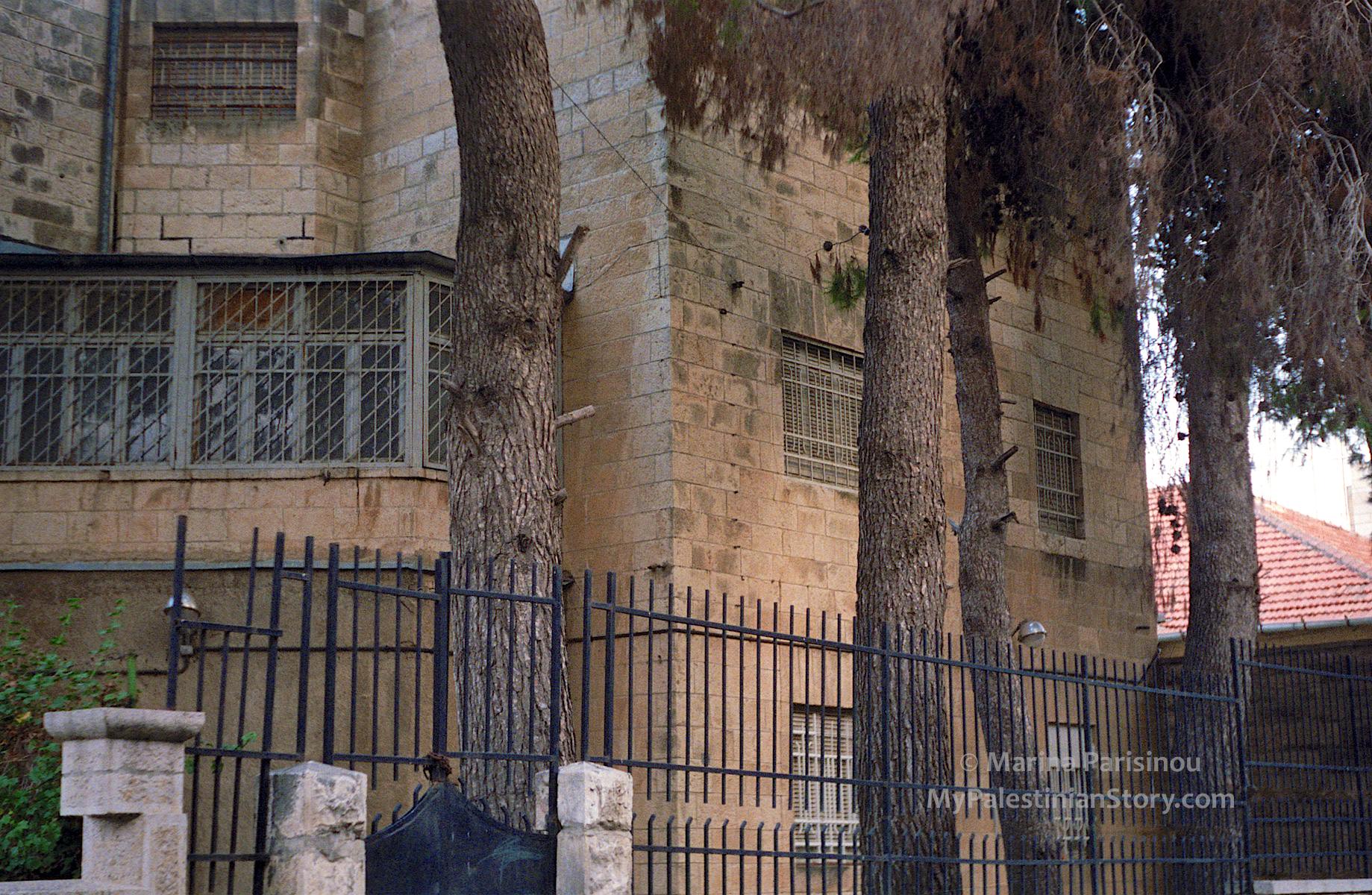
Last year, I made a couple of attempts to find the building again. I had been given directions beginning from the Kassotis house: “Walk down the katifora, turn left at the Semiramis, then right down the hill then <some vague directions here>, take a left and Marika’s house will be there.” The Semiramis turning was the easy part as I knew where the hotel had been. But then things got trickier: “Right? Which right? First right?” “Mmmm… maybe not the first but soon, soon after you turn at Semiramis,” mum had said. Soon?!
My own experience of losing childhood places (following the war in Cyprus) has taught me the fallibility of memory. Images of places and scenes, laden as they are with emotion, are more easily retained (even though they, too, get distorted); spatial relationships not so much.
And then there are the changes an area undergoes with the passage of time. Katamon had been a recently developed neighbourhood in 1948. On the 1946 aerial map Dorit gave me, it looks like some streets may still have been dirt roads. So what is first right today was probably not even considered a proper street back then.

I spent a whole afternoon trying the first right, then the second turn and beyond, after the Semiramis, and looking for two-storey houses that resembled the one in my photograph. Needle in a haystack! Nothing seemed to fit. Neither the streets nor the houses. None of the right turns led to the places that had been described to me, at least none that came soon (!) after the Semiramis. In the end I just walked up and down several streets taking shot after shot (the luxury of digital photography!) hoping one of them might ring a bell when I showed my mother. But I really knew it was hopeless.
This time round, thanks to my good fortune, Maroussia, a cousin of Jenny’s on the Gaitanopoulos side, was visiting her from Beirut just before my trip. She painstakingly drew a whole set of maps and diagrams for me and the three of us together tried to match them to Google maps. We seemed to be getting somewhat closer but my confidence in my prospective on-the-ground investigation was still low.
Jenny and Maroussia lamented not being able to get in touch with their cousin Mamelo Gaitanopoulos, who still lives in Jerusalem, because the number they had for him didn’t seem to work. When I suggested I find him on the internet, they looked at me aghast: how could that be possible?! “Well, it is the era of the internet,” I explained to my technologically-challenged aunts. And given that Mamelo is a person of some renown in Israel, being an accomplished jazz musician, it took all of two minutes to find an email address for him. I wrote asking for a street address for Marika’s house. He wrote back offering to take me there himself. My confidence was now trading in a bullish market!
So, on my second morning in Jerusalem, I waited for Mamelo to pick me up from the bottom of Jaffa Gate. We recognised each other easily as we had met in Cyprus several moons ago. And in less than 15 minutes we were parked on Marika’s street and he was pointing at a house.
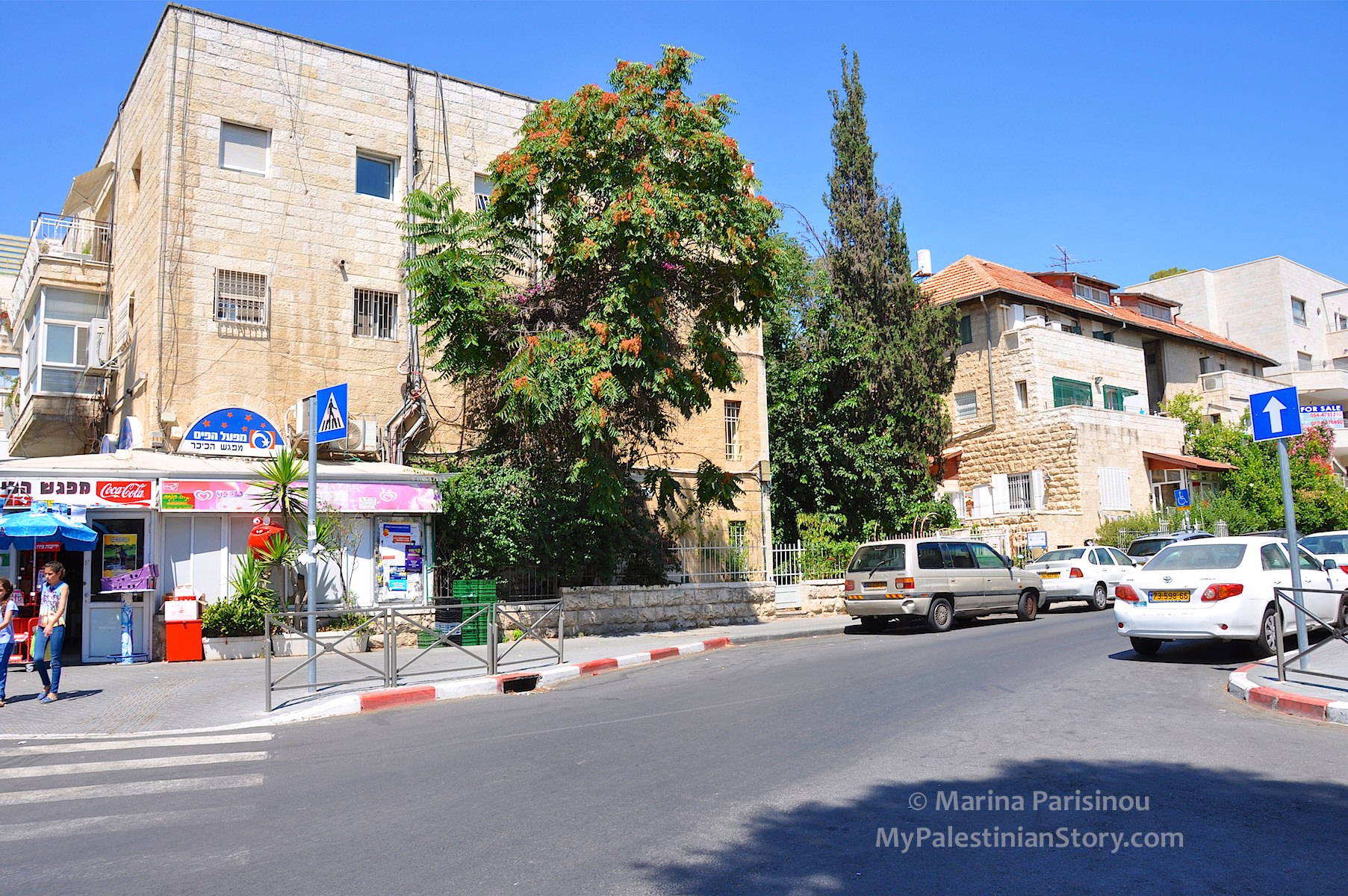
But it was nothing like the house in my photograph. And clearly it was nothing like it would have been back in 1948. The majority of houses in West Jerusalem have been altered, often beyond recognition. Many have been expanded in all directions: floors have been added (it’s usually easy to spot where the old stone ends and the new one begins), rooms attached to the sides, balconies closed off to make new rooms. Many are hiding behind tall fences or under nearly 70 years’ worth of tree growth.
We looked at the house, the second on this block, and I took a bunch of photos hoping they’d spark my aunts’ memories. The experience was anti-climactic. A big so-what rose inside me and I questioned the value of this particular discovery. The answer would come days later as more pieces of the geographic puzzle clicked in place which, together with other elements of the family story, would give me a taste of what my family’s life had been like in those neighbourhoods.
A few days later Mamelo rang me up. He had clearly been bitten by the family-detective bug and had gone on his bike to check out the house again on his own. We decided to regroup the following day for another on-the-spot investigation. In the meantime, taking a closer look at the map Maroussia had drawn, I noticed she had scribbled that Marika’s house was the third one in. So we must have been looking at the wrong house. The one next to it, the third, appeared to be brand new, which meant that Marika’s building had most likely been demolished.
I was happy to leave it at that, knowing it was either the one or the other, the second or third. Either way it looked nothing like it would have when my relatives lived there.
We returned one last time on the Saturday before my departure, hoping to figure out if a bunch of old photographs had been taken in that neighbourhood.
A couple of years ago as I was rummaging through my parents’ things, I came upon a small stack of old black-and-white negatives. They were single negatives, of different sizes, some of them quite large. I had them printed and all sorts of treasures saw the light of day, some from Cyprus and a few from Jerusalem. This particular set featured the four cousins: Anna (my mother), Mary (her younger sister), Feely and Jenny, posing in the street or on top of a fencing wall.
Mamelo had identified one of the buildings as being the Louisides property, at the roundabout after Marika’s. Next to it there was a house with a round section and a balcony encircling it. We had driven round the roundabout after our second visit and had spotted two round buildings but somehow the orientation made no sense. And none of them had balconies.
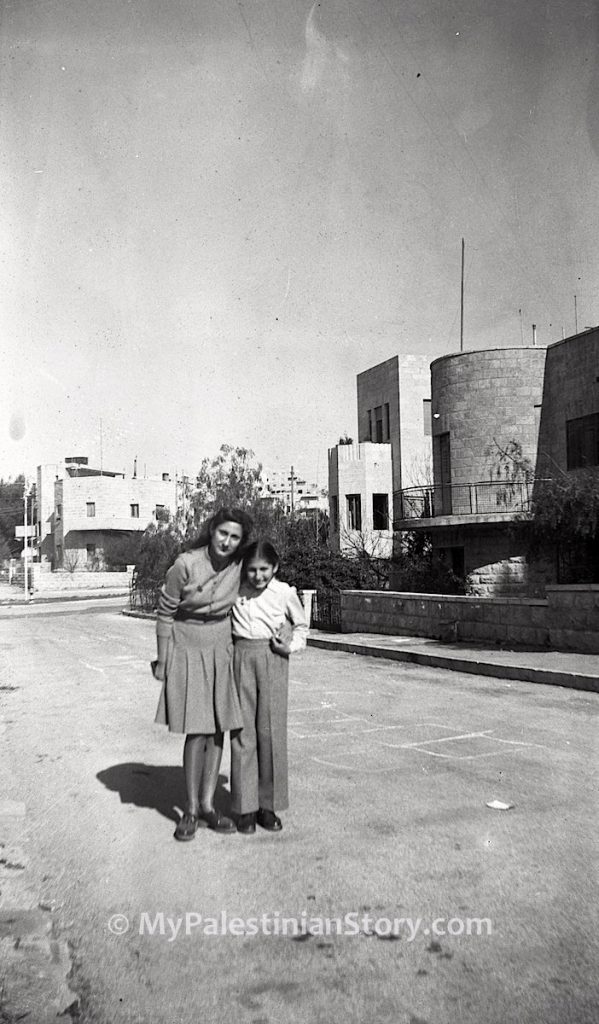

As we drove away, in a rare moment of brilliance I realised what had happened: the negatives must have been flipped horizontally in the printing! Back in the hotel I flipped them the other way on the computer and sure enough, the photos now made more sense.


We confirmed it on that Saturday. But the round building still eluded us. We tried to get a picture with the same perspective but it just wasn’t working out. The two candidates were across the street and no matter where we stood, we couldn’t get them to line up with the Louisides building the way they did in the photograph. I just stared at the photo for a looong time (my favourite sudoku technique when stumped!) and then, thinking it through step by step, I approached the Louisides building. The part that was seen in the photo was clearly the one we were looking at but now tall trees stood in front. Well, if this is the Louisides’ then to its left must be the building. Moving several steps in that direction, I peeked behind the trees at the house next door: there was our round building with the balcony, with a couple floors added to it but the round section intact. It had been hiding behind deep foliage. It felt like a déjà vu of my discovery of Great-Great-Grandfather George Schtakleff’s tomb last year.
With that discovery under our belt, the next photo was easy to place on the map. It was the building across the street from the round house. Once again a case of horizontal flip in the printing. And as I found out from a recent email exchange with Feely, this particular building was slated to be the Jordanian Consulate***.
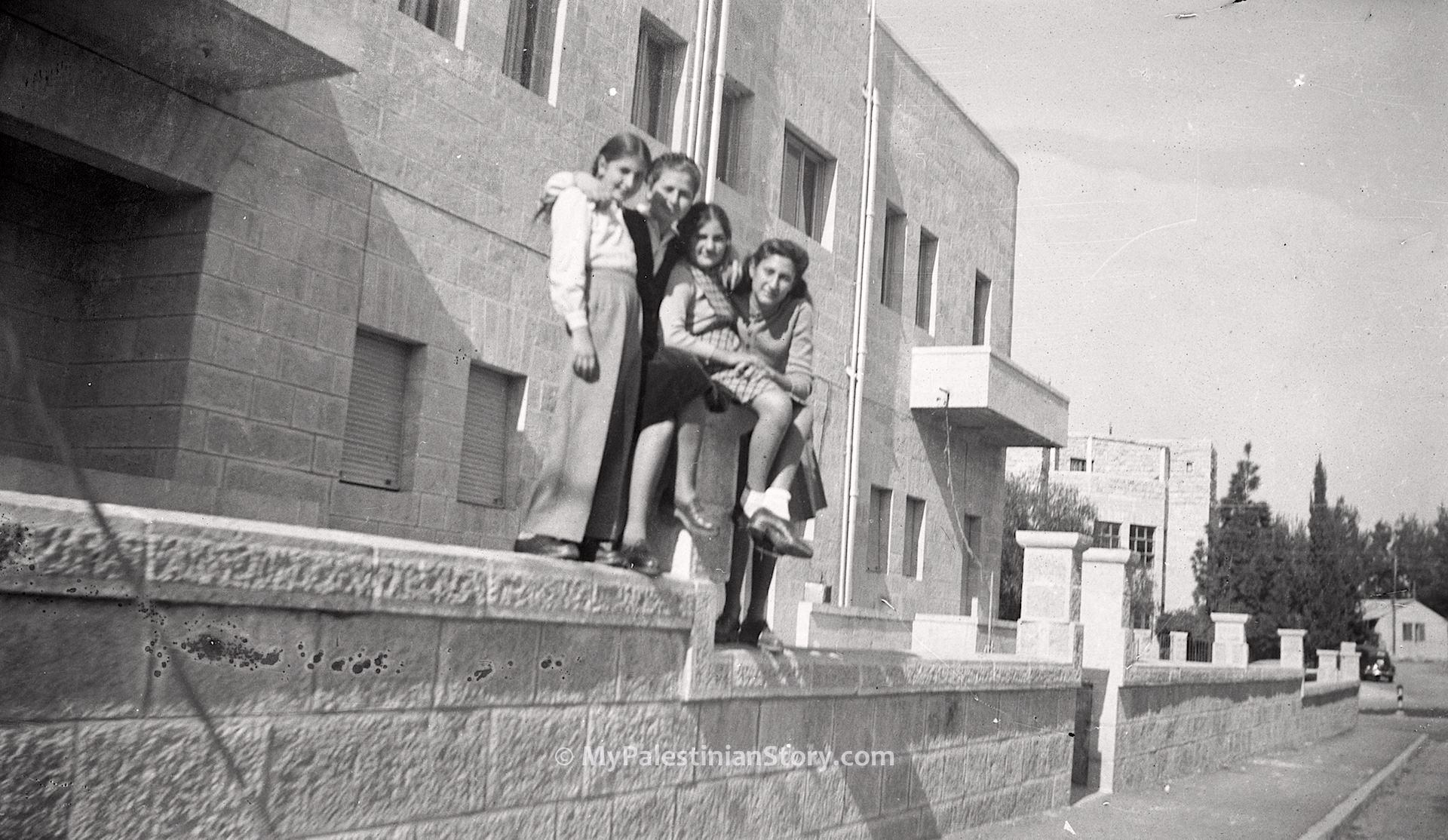
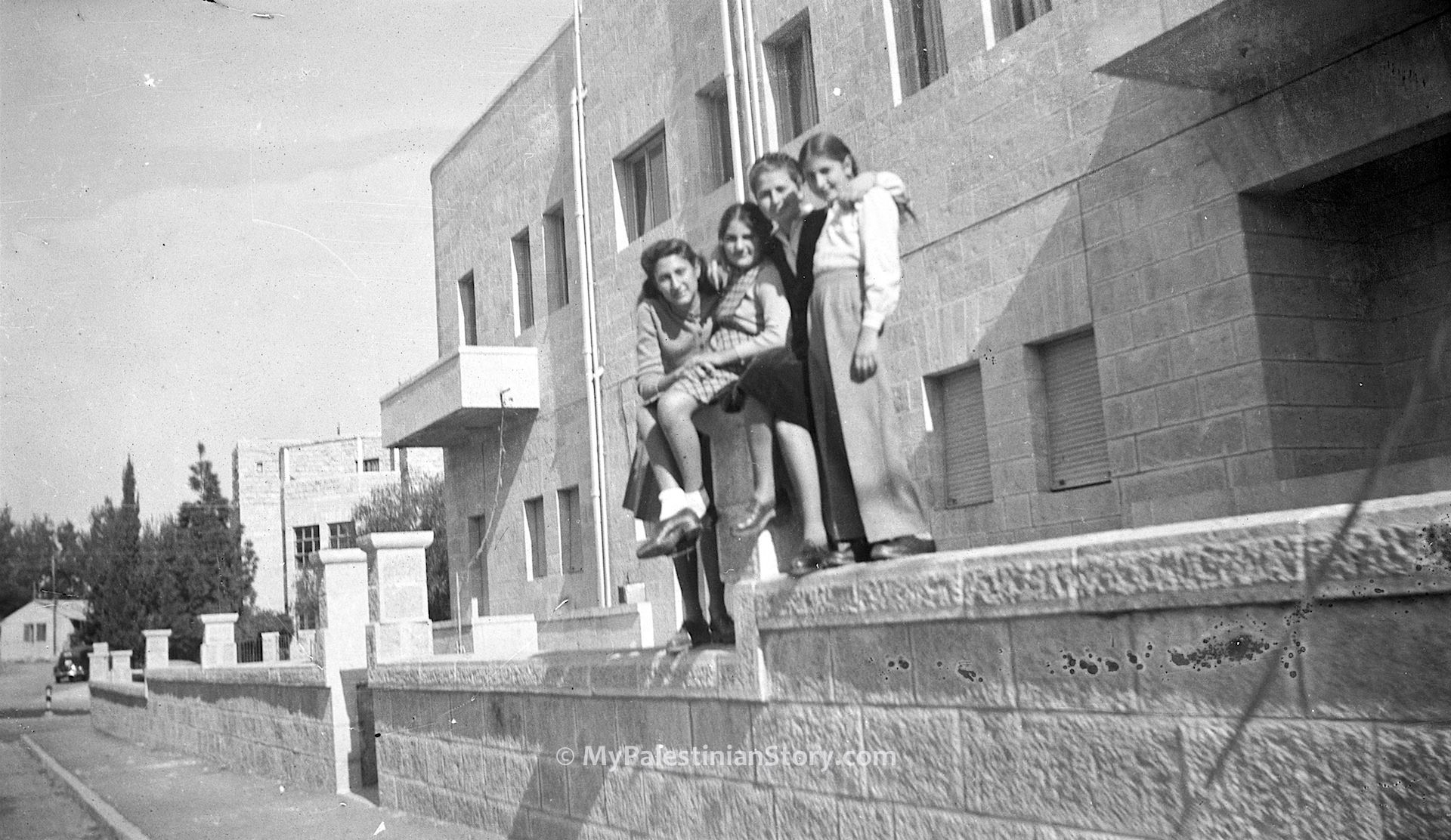
With the information Feely provided, I have now confirmed that their place was indeed the third building on the street we had started from. Being a quadruplex, the building could be reached from both streets: the one we had started on and the one where the round building is and where the photographs were taken. I was somewhat relieved to learn that the entrance to their flat was on the latter. The former is now called Kovshei Katamon which translates to Conquerors of Katamon while their own street has been renamed Bostanai which is some name from Jewish history but deriving from the much more benign word for garden. Gotta be thankful for small mercies… ❖
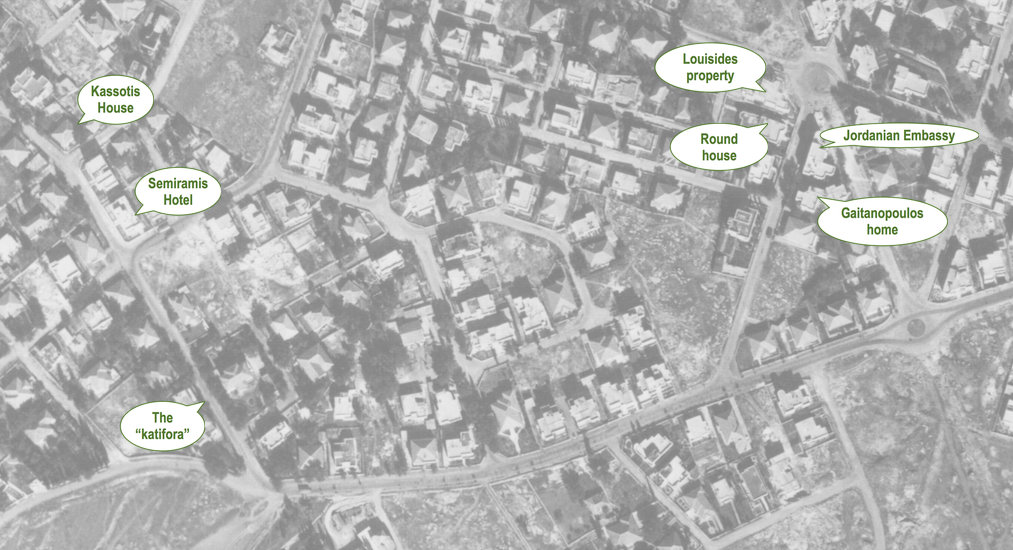
_______________________________
Edited on 7 Jan 2024:
* I now know that the Lorenzos were not the owners of the Semiramis Hotel. Rauf Lorenzo was the manager. See Semiramis Revisited.
** The original said that my family fled Katamon in late April 1948.
*** The original said Embassy rather than Consulate. There were no embassies in Jerusalem.

Great post Marina! Fantastic work!
Thank you, George!
Beautifully written and well researched Marina! Without any doubt a very important piece of writing, both ethnographically and historically.
Thank you for the kind comments, Elena! V. glad you liked it.
Wonderful text and pictures- a labour of love no doubt.
Bravo Marina : ))))
xx
Corinna
Many thanks, Corinna!
hi, articles are amazing though sad, considering the stories behind each and every story,
Maybe you can answer the following question. Near the San Simeon church in old Katamon, a school exists today. Would you know the name of the school?
Also, that same street is today referred to as Mechalki Hamayim street. What was the name of that same street before ? Thank you.
Thank you for writing, Alice, and for your kind comments about my posts. I’ll drop you a line via email regarding your questions.
Bonjour, je m’appelle Anna Gaitanopoulos…
Mes parents sont grecs, plus exactement de Crête…
Bonjour, Anna. Merci pour votre note. Avez-vous vu mon article de blog sur la famille Gaitanopoulos ? Je me demande si vous avez un lien de parenté avec eux. (Je parle un peu français mais j’écris ce commentaire en utilisant Google Translate, donc excusez toute formulation étrange!)